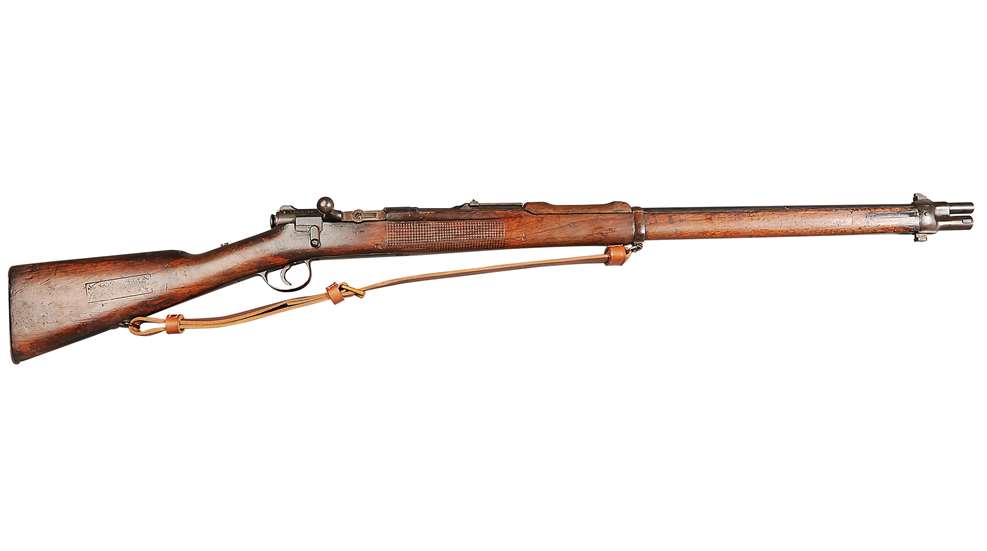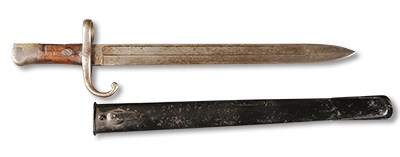
Until the mid-19th century, Japan was a feudal society living in self-imposed isolation. Excepting a controlled, limited relationship with Portuguese traders, contact with the West was considered anathema by the Japanese rulers.
This changed dramatically when American Commodore Matthew Perry, after tortuous negotiations, received some concessions from the Japanese, achieved in no small part by introducing a number a fascinating items to them—including modern firearms.
Prior to Perry’s visit, traditional Japanese arms were stylized, oftentimes exquisitely rendered interpretations of European matchlocks that had been brought into Japan in the 16th century. Though loath to admit it, demonstrations of ingenious American Maynard and Hall breechloaders and Colt revolvers shocked Japanese leaders into the realization that, if Japan was going to re-enter the world stage, it would have to improve its arms.
 Initially relying on a mixture of percussion and cartridge firearms imported from overseas, the Japanese eventually decided that it was in their own best interest to design and manufacture their own up-to-date firearms. To this end, Maj. Tsuneyoshi Murata was sent to Europe to study occidental inventions.
Initially relying on a mixture of percussion and cartridge firearms imported from overseas, the Japanese eventually decided that it was in their own best interest to design and manufacture their own up-to-date firearms. To this end, Maj. Tsuneyoshi Murata was sent to Europe to study occidental inventions.
This excursion resulted in Japan’s first indigenously designed and produced military rifle—a single-shot 11 mm metallic-cartridge bolt-action adopted in 1880—the 13th year of Emperor Meiji’s reign and thus named the “Type 13.” Five years later, an improved single-shot appeared, the Type 18.
Still, it was felt that Japanese efforts were running a bit behind those of other countries, as potential rivals began adopting sophisticated repeaters. In short order, work was initiated to bring Japan’s principal military longarms up to date. What resulted in 1889 was the Type 22, an interesting rifle comprised of features of several other existing foreign guns.
Employing an action based on the Model 1886 Portuguese Kropatschek, the new piece featured a two-part bolt with a non-rotating head and lockup effected by a pair of lugs that engaged recesses in the chamber. The magazine was tubular and held eight proprietary 8x53 mm R blackpowder cartridges. This chambering was later updated using smokeless powder, making it Japan’s first load employing that propellant.
Produced ultimately in two versions, the Type 22 was stocked almost to the muzzle and featured widely spaced square checkering on the fore-end. As production of the gun progressed, changes began to appear, such as the removal of an extra barrel band in front of the fore-end band and the addition of a magazine cutoff on the right side of the receiver just below and to the rear of the bolt handle. A rather odd, diminutive, knife-style bayonet was created for the Type 22. Seen with slight variations, today, these blades can be even more collectible than the rifles for which they were designed.
Initially offered in a 47½"-long infantry model, in 1894, a 37½" cavalry carbine version of the Type 22 was added to the line as the Type 27. The Type 22 was effectively employed in the Sino-Japanese War of 1894/95, and even though it had been replaced by the more modern 6.5 mm-caliber, box-magazine Type 30 in 1897, it also saw use during the Boxer Rebellion (1900) and, four years later, in the Russo-Japanese War. Some were also seen in World War I. Type 22s continued to soldier on into the 20th century, being used for such purposes as training rifles in military schools.
Type 22s are not commonly seen in collector circles, and, when they are, it is not unusual to find them with mismatched parts, which diminishes their value. The one seen here, though generally in NRA Fine condition, is largely matching with the exception of the bolt. Because of this, it is valued at $2,250—had all parts been original to the piece, its worth would have been increased by at least another $500.
Gun: Type 22
Manufacturer: Imperial Artillery Arsenal, Koishikawa
Chambering: 8x53 mm R Murata
Manufactured: c. 1895
Condition: NRA Fine (Antique Gun Standards)
Value: $2,250




































